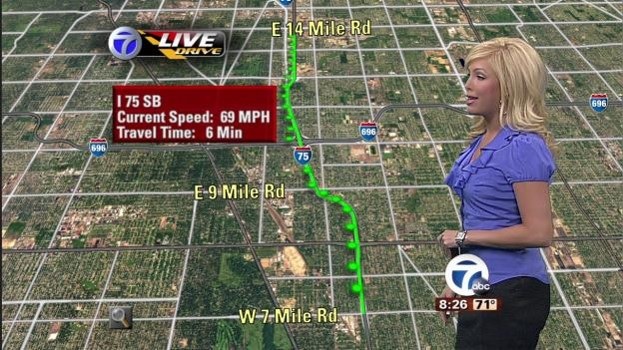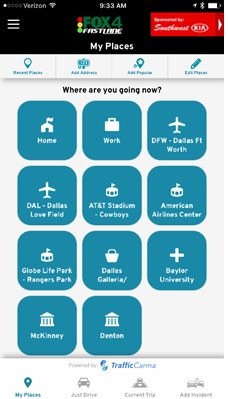
This post is about school closing reports, once a huge radio morning show attraction.
That’s because there’s no more joy in the lives of kids everywhere than learning they’re in for a “snow day.” (For parents, not so much.)
Already this winter, many communities and regions have been socked with snow and ice storms that have necessitated the closing of area schools. For decades and decades, radio was the broadcast town crier, informing teachers, parents, and students about school shutdowns.
So last week when iconic KYW NewsRadio in Philly threw in the towel on school closings – on the air at least – it was a news story of sorts, and a sign of the times. While KYW will continue its extensive coverage of this important winter-time information online – where most people have already shifted their focus – the days of reading laundry lists of school closings on the air are rapidly coming to an end.
As reported on Philly.com last week, KYW’s decision makes all the sense in the world in 2017. With 1,400 school districts in its broadcast area, long, tedious lists of school closings have gone from being a prime listening occasion to a PPM killer.
And if you think about radio school closings from the listener’s point of view, living in an area like West Chester at the end of the alphabet meant you had a long, laborious wait to find out if, in fact, it was a snow day for you and your kids.
The Internet has ended all that. In the same way it has systematically disrupted business information, TripTiks, and want ads, school closings are just the next victim in the path of the Internet storm. Whether it’s text alerts, web pages, or even robocalls, there are far more efficient and quick ways to find out whether your kids will be in class or in the backyard making snow angels than listening to the radio.
 Back at our DASH Conferrence in 2014, Edison’s Larry Rosin delivered a well-received presentation about the state of traffic information on the radio airwaves. In “The Future of Radio Traffic Reports,” Larry noted how school closing info was on the endangered information list.
Back at our DASH Conferrence in 2014, Edison’s Larry Rosin delivered a well-received presentation about the state of traffic information on the radio airwaves. In “The Future of Radio Traffic Reports,” Larry noted how school closing info was on the endangered information list.
And he warned that radio traffic reporting could suffer the same fate, due to mobile apps like WAZE and Google Maps, as well as the audience’s increasing reliance on TV traffic reporting.
For established news and information stations like KYW, on-air traffic reports continue to have great value to commuting audiences. Part of that is due to major market traffic congestion, as well as the regularity of reports, typically aired every ten minutes at set times (“on the 8s”), making it easy to find and remember them.
For FM music stations that air traffic reports twice an hour at unspecified times, these features are on the air primarily because of sponsorship dollars. Their “meter value” is questionable at best, simply adding another minute or two of clutter to already highly commercialized hours.
At DASH, some wondered how television stations have managed to keep their traffic reporting ratings-friendly and worth watching. Using a montage of photos like the one below, Larry provided some possible explanations for TV’s success in traffic.

Radio doesn’t have the advantage of visuals. Its traffic reports will now have to compete head-on with mobile apps and the many other online tools available to consumers. As more and more people become accustomed to traffic apps as well as in-dash navigation, the need for radio to up its traffic game has never been greater.
And there may be alternatives to simply reading traffic reports over the air, a practice that will seemingly go the way of school closings. TrafficCarma’s Gary Lee explains his service (now being used by WGN/Chicago and Fox4 TV in Dallas) supplements on-air reports with a mobile app mashup of traffic info culled from crowd-sourced content, road speed reports, traffic cameras, and public agency reports.
 Gary says that “TrafficCarma was built for broadcasters to help solidify their position in the increasingly important mobile space.”
Gary says that “TrafficCarma was built for broadcasters to help solidify their position in the increasingly important mobile space.”
Not to mention hanging on to that “traffic authority” position, especially for dominant news stations in major markets with daily commuting challenges. Clearly, moving to solutions that combine mobile, apps, and other technologies will become even more important to radio’s quest to stay relevant in cars.
And like the school closing issue, the ability for consumers to customize their routes goes to the heart of what Larry Rosin spoke about at DASH. Sitting through long lists of traffic jams, crashes, and delays – most of which don’t address your particular commute – amount to poor service and bad radio at a time when consumers are looking for instantaneous, on-demand information that they can put to immediate use.
That’s why school closings are migrating to the web. Consumers still rely on radio traffic reports as their top source but that lead will diminish over time as mobile solutions and other sources of road information become available.
There’s still time for radio to keep traffic in the win column, but it will take more than the trafficopter and reporters named Lane Closure to pull it off.
- What To Do If Your Radio Station Goes Through A Midlife Crisis - April 25, 2025
- A 2020 Lesson?It Could All Be Gone In A Flash - April 24, 2025
- How AI Can Give Radio Personalities More…PERSONALITY - April 23, 2025




This was considered at our radio stations, but there was a factor that tends not to get factored in when having this conversation. Sure the schools directly contact the families of school children, but what about business owners and managers who are impacted by the school closings? Those who do not have children in school. And in our community we also do a significant amount of non-school closings, such as businesses and volunteer organizations? If we do not share those then who will? We still receive a large amount of feedback in appreciation for providing all closings and cancellations as a result of severe weather. Proving it is still valuable.
Dave, it’s on a market-by-market, even station-by-station basis. In diary markets – where perceptions very much matter – there’s no question these reports can be part of your overall information package. It’s essential to point out that KYW is fighting “meter migration” in Philly when every minute causes tune-in…or tune-out. Ten minute lists of schools, businesses, events, and everything else are PPM killer, and that is probably a key reason why KYW (and other top 50 market stations) made that call. Thanks for pointing out that there are different situations out there that determine strategies.
Great topic. School closings were can’t miss moments and radio won the battle for top of mind awareness. As other technologies deliver the information more efficiently, we haven’t created new reasons for people to think of radio first.
With the demise of traffic reports, it offers us, an industry, an amazing gift: a completely blank canvas opening up up to 10 min per hour. Will we find new reasons for people to seek us out and the corresponding sponsorship dollars that go along with it or will we just replace those precious minutes with more of the same?
Perhaps this blank canvas will help radio innovate further. With online streams and crowd sourced content, our audio brands no longer have to be limited to offering just 24 hours a day of programming, because that’s all a transmitter can broadcast.
If stations were cultivating 100 or 1,000 hours of content a day, there would be less pressure to strike gold with a definitive, new can’t miss moment, instead offering a litany of smaller ones.
Andrew, thanks for the comment. I love the “blank canvas” concept. Radio has the chance to provide service to its communities, albeit in different ways moving forward. Appreciate you taking the time to comment.
The last few times I have heard a school closing report in our market, they not only read the usual large districts, but they went as far as charters and private schools, also. I often wondered why they wouldn’t just hit the “highlights” much like sports reports that exclude out of town scores.
Kurt, that’s the problem with these old school reports – no customization. Some want the greatest hits, while others depend on charters and religious school info. The online solution allows for anyone to access this info on demand, leaving the on-air sound cleaner and less cluttered. Thanks for the comment.
Completely agree with the traffic report going the way of the dodo on the FM music format; and any programmer that isn’t lying will tell you that he/she does not want the extra clutter of traffic in their breaks. I agree that it’s absolutely a necessary evil for moving the spots.
However the traffic report will always in exist in the News Talk/News Wheel format.
While accessing traffic information for the end user will be augmented with things like WAZE and Google Maps, the context that a traffic reporter can provide to the delays that listeners are experiencing is still a valuable service element.
As we said in the post, a strong News/Talk station knows how to ensure that traffic will remain a mainstay. It would make sense, however, for them to be pursuing ways to integrate other resources to enhance their efforts. There’s a lot riding on it. Thanks, PJ.
The principal of Carly’s school tweets them when they close – so the get the intel in real time and by-pass radio and TV.
It fascinating to watch.
They live on Twitter waiting for him to tweet.
Twitter is where those “special occasions” have moved to. Thanks for pointing that out, Lori.
We switched our stations to a new approach last year. Our listeners are asked to text “closed” to our text line. They get an auto reply with a link to our FB post that has a constantly updated list of closings for our area, grouped by universities , counties , government offices, etc. seems to work well. Our audience seems to like it.
Gary, thanks for the update. More stations are going to look for alternatives that better serve listeners.